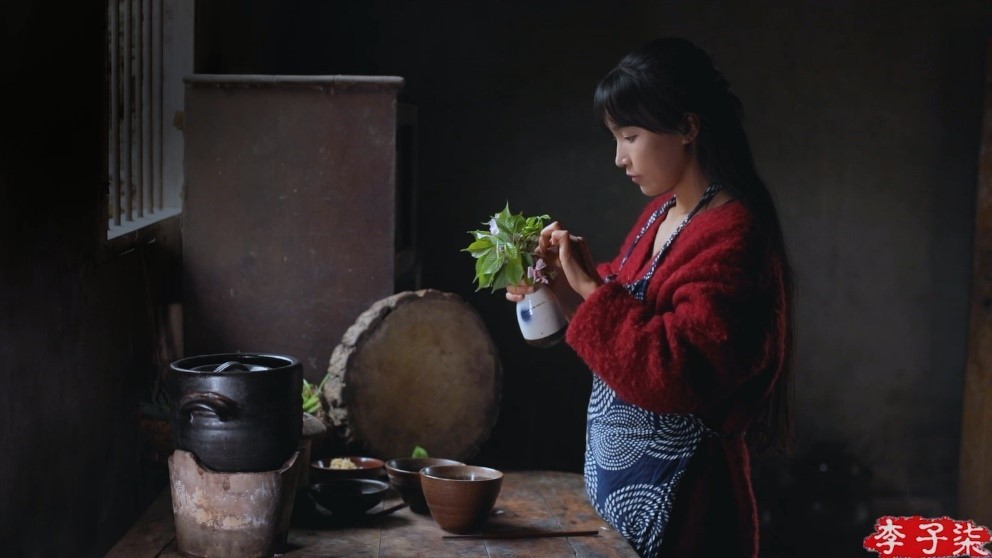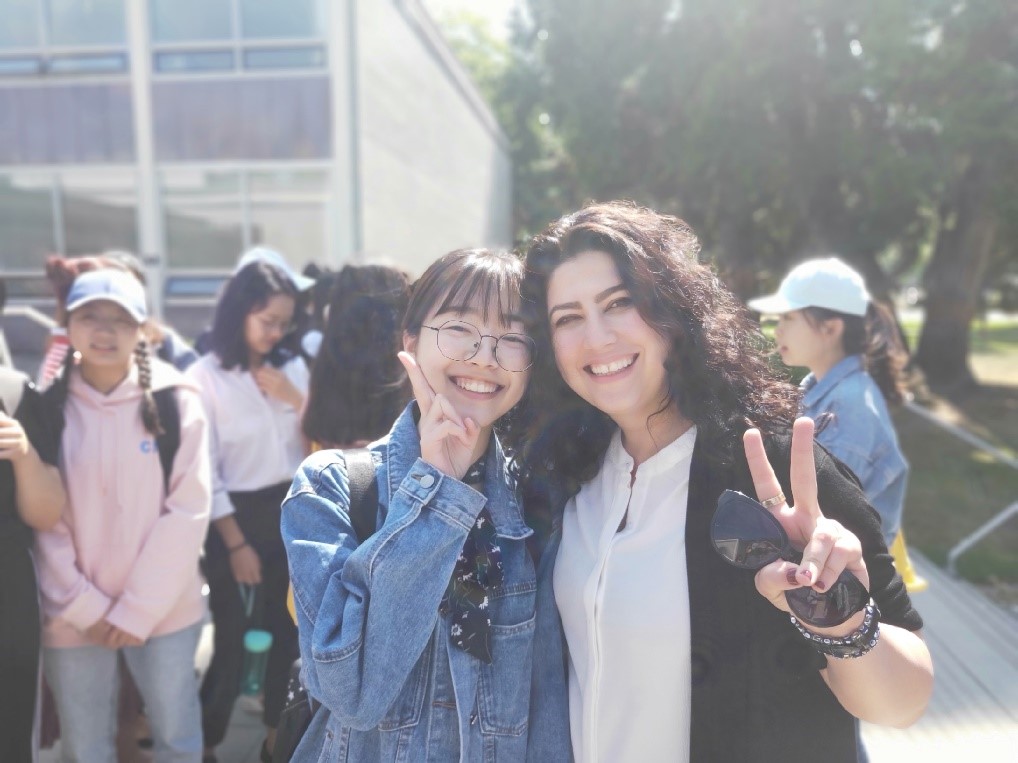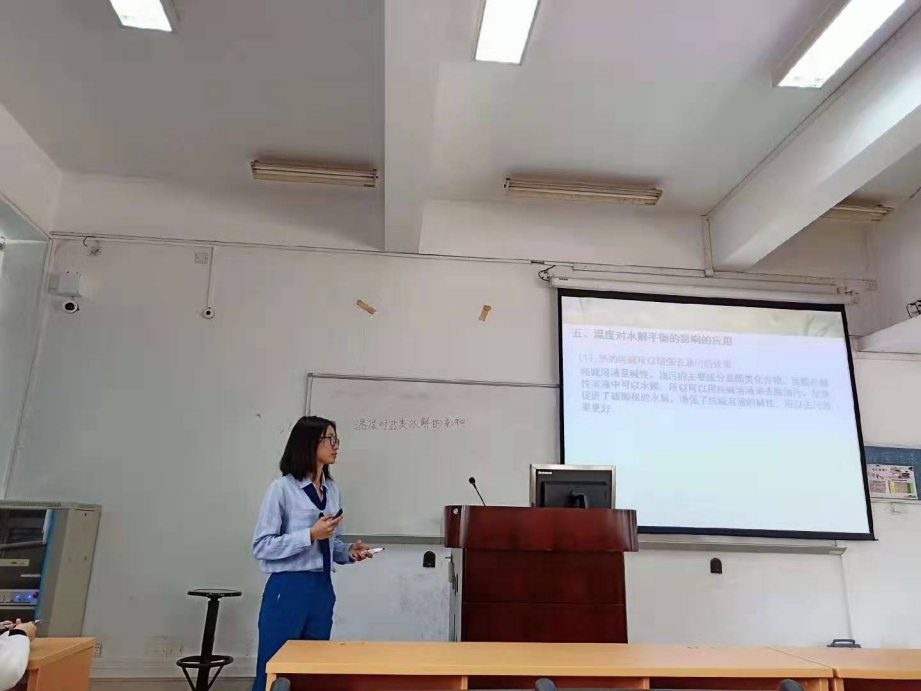
Likes
Editor's Note: The third SCNU English writing contest, themed "Telling China’s Story", ended with 422 entries from 33 different schools. We congratulate all prize winners on their outstanding performance. Awarded winners have been announced (see results), and all winning entries will be published in this column.
-------
By Zhang Jingyan
Dressed in coarse clothes, wearing long hair, the blogger Li Ziqi cooks wine and tea and plants fruits and flowers in a secluded house inside a bamboo forest with her skillful hands. By presenting the traditional life of rural China in the form of short videos, she succeeds in captivating countless foreign audiences, making them yearn for traditional Chinese culture.
Li has up to 7.35 million fans on Youtube, most of whom are drawn by the beauty and customs of rural China. The success of this approach has already been confirmed by its popularity among foreign netizens. Therefore, in my view, we can tell Chinese stories well by presenting the idyllic life, culture and traditions in rural China in the form of social media. When Chinese cultural symbols in rural areas are put together like a jigsaw puzzle, a real and three-dimensional China will be revealed vividly in foreigners' eyes.
The reason why I want to tell Chinese stories in this way is that the stories told by CGTN and Global Times are regarded by westerners as government propaganda and they just don't believe them. On the contrary, if ordinary people tell Chinese stories spontaneously through social media, westerners can hear our inner voices and treat our descriptions of the image of our country without political orientation.
The countryside I want to display to the world is a poetic place full of fields, peach blossoms and flowing streams. Being in the midst of flowers and fruits, the countrymen seem able to do anything with their skillful hands that can both hold a knife and an embroidering needle. This picture will greatly coincide with our poetic imagination of traditional China.
In the ancient days, Tao Yuanming sketched the dreamland which was brimming with fallen petals, fertile farmland and beautiful ponds, and attracted countless celebrities and patriots to search for it. Nowadays, the majority are surrounded by concrete buildings and the frantic flow of cars and always rush in a hurry. In this case, who won't yearn for a stream of cool spring water and the pleasant smell of flowers? As a Chinese saying goes, "state-state relations lie in amity between the people, and amity between the people lies in mutual understanding." Foreign friends can find empathy and resonance in the green mountains and clear waters of Chinese villagers. Isn't this a positive cultural transmission?
Led by Li Ziqi, we young people can also spread Chinese rural culture abroad through short videos and make them popular all over the world. For example, we can capture the hearts of a mass of audiences from southeast Asian by presenting them special food in Yunnan via short videos on TikTok. Sauce making technology, ink stone making skills can also be exhibited to demonstrate rural Chinese food and skills so as to transmit the wisdom of our ancestors to the world. Young carpenters who have inherited traditional carpentry skills can also contribute to introducing wooden handicrafts, including mortise and tenon joint structure, Luban locks and Luban benches abroad to promote our rural culture. Opening this window called traditional Chinese rural culture, what the foreigners can perceive is the simplicity and innocence of Chinese rural life, the poetry and beauty of accompanying natural scenery and most importantly, the profoundness of Chinese rural culture.
Some people may oppose to this kind of cultural output because they think it reveals the backwardness of Chinese farming life. However, in my opinion, it truly enables the world to get a deeper insight into what the contemporary Chinese countryside is like in the new era. The forest after rain, the daily farming life, wine making and tea drinking manifest the breathtaking beauty of original ecology of the countryside, which enables us to confidently present the image of rural China to the outside world and the world to rediscover its beauty.
After saying so much, how can we tell Chinese stories well by spreading rural culture and life? Actually, when the image of rural China is transformed into a group of lovely Chinese people and a series of vivid Chinese stories, the symphony of Chinese rural culture will be played around the world. Therefore, to tell the best Chinese story, we can record the life of people and natural beauty in rural areas and update it on personal accounts so that the whole world can see the real China and sincere sorrow and happiness of people. Additionally, to build bridges between different civilizations and make our voices heard effectively, we should combine tradition with innovation to move the world by feeling and inspire their imaginations with images.
To reach this goal, we should not just focus on making our videos more elaborate, since what astonishes the world is often the profound knowledge of rural food, traditional crafts and culture. Traditional rural items, from lamps made of bamboo to wooden swings, from brewing wine made from summer lotus to making stuffing made of plum, and from homemade rouge to knitted wear, can all deliver the primitiveness and tranquility of our countryside to foreigners.
Intangible cultural heritage in rural China can also be picked out from the river of time, carefully polished and presented to the world in the form of exquisite and vivid short videos. We can also attach a long article explaining the historical origin and inheritance of the intangible cultural heritage in detail, giving the video itself more profound historical significance. In this way, some foreigners may recall the traditional culture they had close contact with in their childhood, some may be deeply amazed at the delicacy of heritage crafts, while others may have resonance with the heritage because they have participated in inheritance work before.
To conclude, to tell Chinese stories well, we should take aim at foreign people's fragmentation and aesthetic demand and connect Chinese rural culture with modern technology to make the abstract and distant image of China turn into actual forms. By means of this are we able to integrate rural Chinese culture into life and make the world fall in love with Chinese stories.
What to read next:










